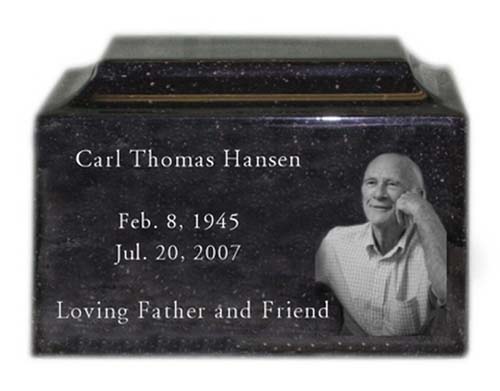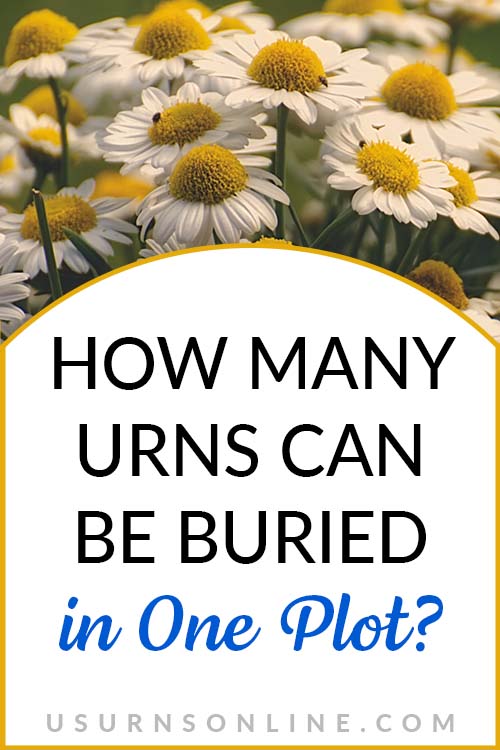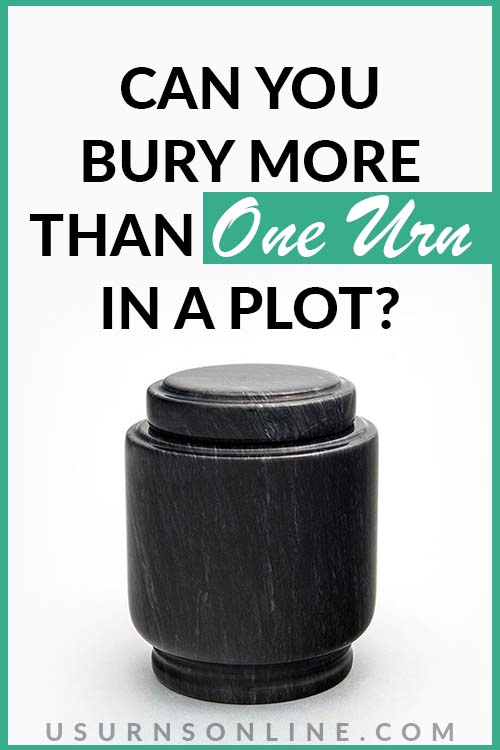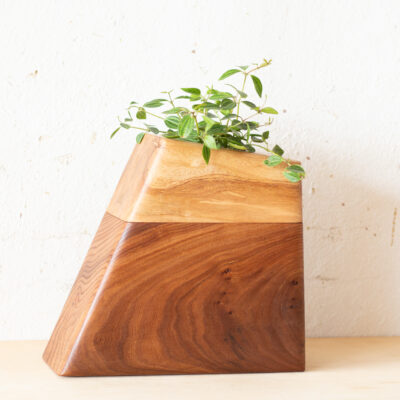The loss of a loved one is always a difficult period in the lives of family members. Of the many decisions that you need to make, one of the most important is what to do with the remains.
The choices are perhaps even more varied when it comes to cremation. Today, we’re going to look at everything you need to know to answer this specific question: How many urns can be buried in one plot?
Cremation Urn Burial
There are many reasons why people are choosing cremation of their loved ones. This can include overall funeral costs, sustainability, and a wider variety of options. However, the number of options cremation provides leaves many people with a number of questions.
One of the most common questions is this: Can cremated remains be interred in a burial plot – especially along with another urn or casket? How many urns can be buried in one plot?
Cremation urns are buried all the time. Let’s talk about what this looks like in practice.
Cemetery Grave Plot Sizes & Policies
While there are a variety of types of places where people may place urns for interment, the most common by far is a traditional cemetery. To understand how many urns you can bury in a one grave space will requires consideration of standard burial plot sizes.
According to the International Cemetery, Cremation, and Funeral Association, the standard size of a burial plot is 2 ½ feet wide by 8 feet long. For larger persons, plots may be available up to 4 feet wide and 9 feet long.
The size of each urn varies, but they generally don’t measure more than about 12 inches on the longest side. So judging by size alone, quite a few cremation urns would be able to fit into a typical cemetery plot.
How Many Urns Can Be Buried in One Plot?
So, how many urns can you bury in a single plot? The vast majority of cemeteries will allow at least two urns to be buried in one burial plot. In some cases, a cemetery will allow four and even up to six for interment in one space.
Ultimately, it tends to come down to a specific cemetery’s policies. Call around to local establishments and find out the options available to you at each cemetery. Most will try to find a way to accommodate your requests and preferences.
Urns Made in the USA
Honoring Your Loved Ones
One of the reasons that people may choose to bury multiple cremation urns in one plot is to help honor the memory of loved ones.
For example, this practice allows a husband and wife to be buried together in the same plot. It could also be a good choice for a parent and their child depending on circumstances.
When deciding upon internment of multiple urns in one burial plot, it is important to consider whether the names will all fit on one headstone. In some circumstances, family members may opt for separate graves in order to give each person their own headstone. Separate headstones may be the way you choose to best honor each loved one’s memory.
Related: 8 Things You Need to Know About Cremation Urns
Burying the Urn

As you could probably imagine, the process of burying an urn can differ depending on where you are burying it.
Additionally, different states may have different guidelines governing the process. When burying an urn in a cemetery, most places will bury it about three feet deep; however, some may place as little as six inches of dirt atop the urn. Typically, however, you’ll want a minimum of one foot.
Aside from depth, the burial process varies a bit as well. Most typically, an urn is placed inside a burial vault, a container that will not decompose. Some urns, such as those made from marble or granite, can serve as their own burial vault.
Urns can also be placed directly into the ground. If you are doing a home burial or an eco-friendly natural burial this is how you would do it. However, most cemeteries do not permit this.
Can You Bury All Urns?
Technically, you can bury any type of cremation urn in a burial plot. However, most cemeteries do have restrictions. A cemetery wants to ensure that its grounds are well-kept for visitors.
If you bury a cremation urn in the ground, over time it will decompose. As the urn biodegrades, the ground around it can settle, leaving the surface lopsided and irregular. A burial vault is a non-biodegradable outer container that will prevent this from happening.
Thus, most cemeteries require burial vaults for urns made of wood, ceramics, metal, and glass. As noted earlier, urns made from stone such as marble and granite are often exempt from this requirement as they do not biodegrade.
Can You Bury an Urn in Your Backyard?
Many people wonder if they can bury an urn in their own backyard. After all, keeping a loved one close may prove to be a meaningful way to remember them. Additionally, if the loved one lived in a home for a long time or particularly enjoyed spending time in a place like their garden, this may be a symbolic resting place.
The short answer is yes, you can legally bury an urn in your backyard. In fact, all fifty states allow this practice.
What Types of Burial Plots are There?
For those thinking about internment of an urn in a traditional cemetery plot, it is important to understand the different types of burial plots that exist.
- Standard – the most common type found in a cemetery, it can hold one casket or, typically, at least two urns depending on policies.
- Companion – fitting two caskets, a companion plot allows burial of two people side by side or one on top of the other.
- Family – sometimes a cemetery allows a family to purchase a small area that is dedicated to an entire family to be buried over time.
- Natural – often called “green burial,” this is an environmentally friendly way of burial in shallower ground with shrouds or biodegradable caskets, typically in areas that do not appear to be cemeteries at first glance
When asking how many urns can be buried in one plot, the answer typically comes down to an individual cemetery’s policies. While you can bury at least two urns in a single plot in most cemeteries, some allow more.
Read next: Cremation Ceremonies: Planning Special Events for Burial or Scattering
Pin It





On multiple names on the headstone. The Greeks built the Parthenon columns in sections Before Christ with hand tools.
And many times the columns were reassembled. Why could the headstone be like this? Adding headstones in sections. As a result, up to six urns can be in one plot. All services can make it work. However, there could be some family politics, so that needs to be ironed out before the headstone rises.
I would like to know after burying a family member in urns in your backyard would that then become a cemetery in fact. Also with both state and federal laws then state that infact no one can basically take that property away from you.
Id like to know the laws and statute on this please
I would like to know after burying a family member in urns in your backyard would that then become a cemetery in fact. Also with both state and federal laws then state that infact no one can basically take that property away from you.
Id like to know the laws and statute on this please
Hi Laura,
You’d certainly want to consult a lawyer for that question. A local lawyer would know or could help you figure out the laws and statutes pertaining to home burial.